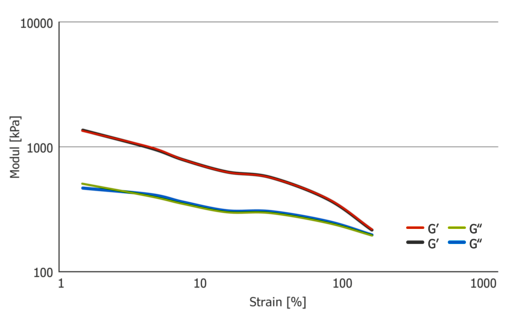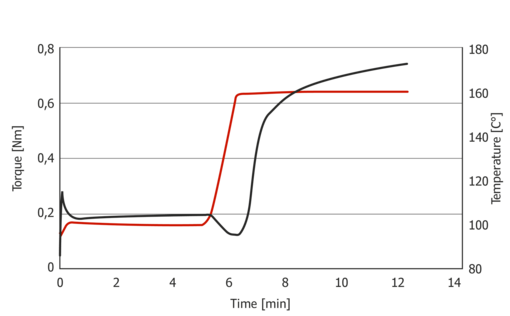The Payne-effect describes the alteration in the polymer properties, which are caused of mechanical stress. The definition of this effect is the difference of the complex modulus at small and large amplitudes.
The first payne curve of an unclaimed sample is different in comparison to a claimed one. The network of the claimed sample is destroyed short after mechanical stress. It will be rebuilt after some time.
An Amplitude Sweep at a non-vulcanized compound shows the Payne-effect.
The crossing point of G‘ and G‘‘ helps judging the filler medium network. A GÖTTFERT Rubber Prozess Analyzer also known as VISCO-ELASTOGRAPH enable the opportunity to analyse the Payne-Effect through an Amplitude Sweep with an unvulcanised compound. The crossing point von G` und G`` is useful for user in quality control as well as in research departments for analysing and characterization of the network.

The Visco-Elastograph (VE) or Rubber Process Analyzer (RPA) enables the option of an amplitude sweep of a non vulcanized sample...

GÖTTFERT MDR Elastographs, enable operator through a temperature sweep with an integrated temperature control program...
Send us an e-mail info@goettfert.de or call us +49 (0) 62 81 408 - 0
We will help you with pleasure.